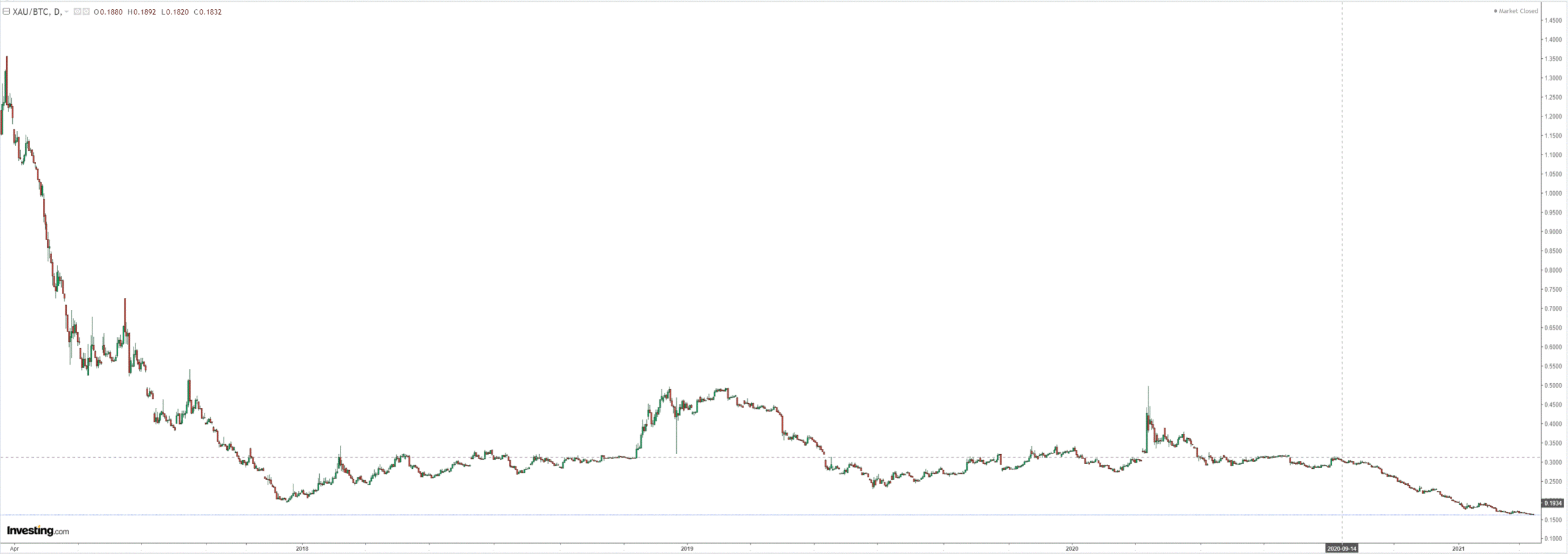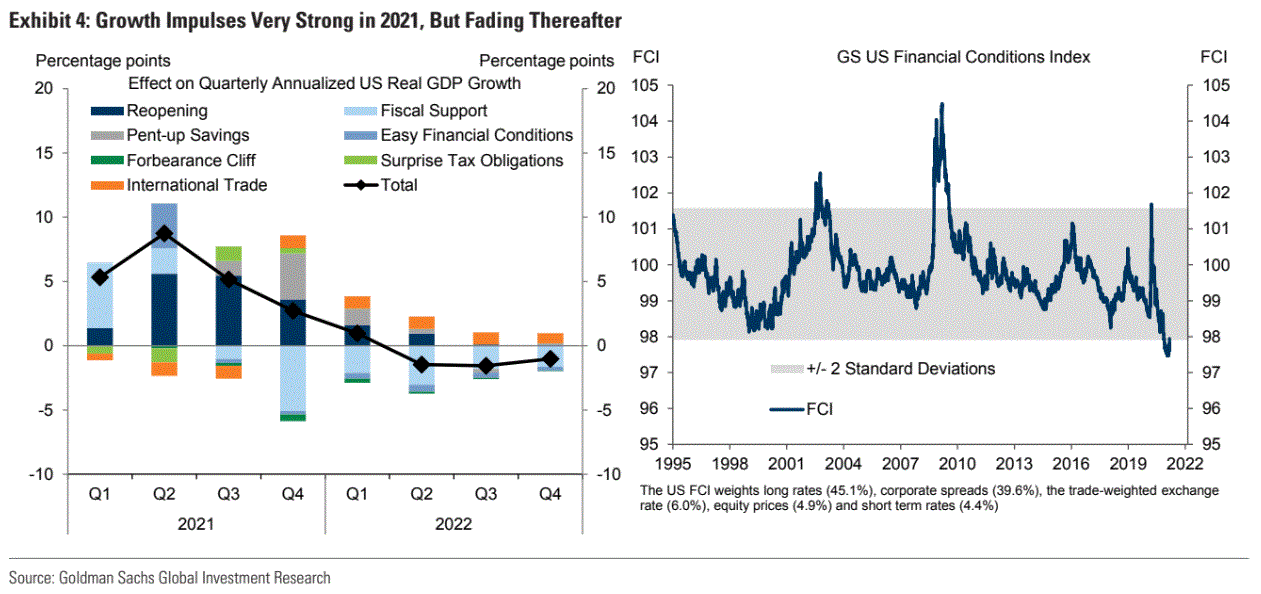Over the weekend, Bitcoin hit a new record high against both the US dollar and gold. Should we read this as market signal or ongoing ponzi scheme inflation?
My recent thoughts on BTC have followed the schizophrenic thinking in market participants. On one hand, we have titanic figures like Elon Musk declaring BTC the new medium of exchange for goods and services. On the other hand, we have an entire industry of asset managers declaring BTC is the new gold, the ultimate store of value as fiat currencies are devalued.
I have noted that it cannot be both. If it is the former then it is so threatening to governments and central banks that it is inevitable that they will crush it. If it is the latter then BTC may have a future, even though it is a far contingent form of gold than gold is.
So, between these two polarities, should we read BTC’s new high as signal or ponzi scheme noise? Gold has also been a little bid last week as the US dollar rally eased but not enough to even signal a change in trend. Moreover, the more that the US dollar rallies, the more some are expecting the Fed to step in to end its threat to reflation. From the Bear Traps Report:
Highly-priced assets need lots of central bank love to stay highly-priced. Likewise, just a hint of future possible Q3 2021YCC (yield curve control) deployment is the tactical nuclear weaponry needed arrest the dollar’s ascent and preserve the global economic recovery.TheFed must “out-dove” other developed market central banks, they have NO choice. Everyone thinks it’s 2013-taper fears are sky high for gold. In reality it’s probably 2010. In other words, we eventually get the taper, but the overwhelming point is-other weapons have to come first. We understand the economic growth outlook is robust. Rosy 6-7% U.S. GDP street forecasts are on every corner in Manhattan-but the 2nd fiscal deal of2021 is not a slam dunk. In Washington, ACG Analytics reminds us the next piece of legislation needs 60 votes in the U.S. Senate and comes with tax hikes through “regular order.” Ten Republicans need to come on board. We could geta large infrastructure bill through “reconciliation” (50 votes needed) in December tied to the 2022 budget year, but that’s a ways off. Keep in mind, last year (similar to 2002-2006), U.S. mortgage refinancing added 50-75bps to GDP through home equity extraction. With higher bond yields, we won’t have this luxury in the U.S. economy’s back pocketin 2021.
Bottom line, if the Fed doesn’t contain the USD-they blow up the global economy for the 4th time since 2013, even they can figure out this piece of risk management. Over the last decade, the higher greenback’s global deflationary powers have been well advertised. This is the Fed’s biggest fear, it’s a large inequality driver indeed. If Powell plays“tough guy” in staying with the current path-without offering further assurances of deeper, more sustainable accommodation-the beast inside the market will keep pushing him until he breaks. We will see a repeat of Q4 2018-Q1 2019, where the Fed was forced into an utterly embarrassing pivot. One of those is enough for Powell’s legacy, he doesn’t want two. With 13,000,000 more Americans now outside the labor force, relative to January 2020 levels, theFed chair has NO room for games. A narrow window indeed. He must act proactively now and he knows it.
The Nasdaq is facing a lose-lose risk dynamic. A Federal Reserve offering insufficient accommodation places markets in the crosshairs of a risk-off event, equities need more love to stay afloat at nosebleed levels. A FederalReserve pushing forth a dovish pivot, extending accommodation with forward guidance and hints of yield curve control-pressures the dollar lower, putting commodities, value, global cyclicals, materials and emerging markets into rotation overdrive.
A few points:
- A turn in the Fed will not be bearish for tech stocks even if a rising DXY most certainly will be.
- It is not inevitable that the broader market will push the Fed to ease or it will crash because there is a very powerful value rotation underway beneath the surface.
- The Biden Administration is only pretending to want Republican votes for its huge infrastructure package. It knows that they are pretending so it is too. Budget reconciliation is already in play for the new fiscal year beginning October 1st. This is timed perfectly to pass the growth baton from the $1.9tr stimulus enacted last week:
- Given the speed of this amphetamine-driven market cycle, the Fed may well be already done easing and allow rising yields to deflate the tech stock bubble. After all, financial conditions remain astoundingly loose. So long as it does so without upsetting the 30-year yield and mortgage rates, little macro harm will result amid so much fiscal support.
So, my question today is, is a new high for BTC signaling a turn in Fed posture even though gold is not? Or, is BTC ignoring all market signals and simply inflating because it can, as the first-ever global ponzi scheme might?
This matters a great deal for where it is about to go:
- If the Fed doesn’t panic then gold and BTC should both track tumbling tech stocks lower.
- If BTC goes up despite point one scenario playing out then it sure isn’t any kind of gold that we’re used to and looks a lot more like a straight-up ponzi-scheme.
- If BTC leads a shift in the Fed and gold doesn’t then the latter will have been genuinely displaced as the chosen reflation currency of global markets.



